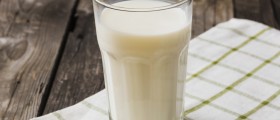
Iron is a mineral that is essential for a number of the metabolic functions in the human body. The optimum concentration of iron in men is 3.8 grams and 2.3 grams for women. This level is not met in all people because many do not eat a diet that provides enough of this important mineral. Insufficient amounts of iron may lead to iron deficiency or anemia.
Importance of iron
Iron is believed to be present in all the cells in human body. Its main benefits for human health are those related to good immune system, adequate energy levels and mental intelligence. In healthy persons, the body self-regulates the absorption of iron for different needs.
Iron is vital for the production of hemoglobin and myoglobin, for generation of specific enzymes, for expulsion of carbon dioxide from the blood, and fro delivery of oxygen to blood and organs. It also improves the immune system, respiratory system, provides energy and relieves fatigue, enhances mental performance and promotes protein metabolism.
Iron deficiency
Any fall in iron levels in the body results in more or less serious health issues. Certain conditions can decrease iron levels and affect iron absorption, and those include severe bleeding due to injury or other factors, pregnancy, malnutrition, digestive diseases that affect the absorption, and others.
Signs and symptoms of iron deficiency include fatigue, lethargy, paleness, headaches, dizziness, lightheadedness, stomach ache, brittle hair and nails, short breath, trouble sleeping, high heart rate, sore tongue and poor immunity.
Iron deficiency is treated by increasing the intake of foods rich in iron or by taking supplements.
Food sources of iron
Iron generally comes in two forms, heme and non-heme iron. Heme iron is found in foods of animal origin, while non-heme is found in plants. The absorption of heme iron is much greater than that of non-heme, meaning that the intake of non-heme iron sources needs to be greater in order to assure adequate levels of iron in the body.
Good sources of heme iron are poultry, beef, pork, lamb, salmon, liver, oysters, and other kinds of meat and fish.
As for the non-heme iron, it is found in green leafy vegetables like spinach, collard greens, lettuce, in kale, black-eyed peas, tofu, egg yolk, prunes, dried apricots, white bread, bran, peanut butter, pumpkin seeds, lentils and chickpeas.
Food sources of iron must not be overcooked and are best if boiled or cooked with just a little oil. Also, vitamin C enhances the absorption of iron so food sources of iron should always be combined with sources of this vitamin.

















Your thoughts on this
Loading...